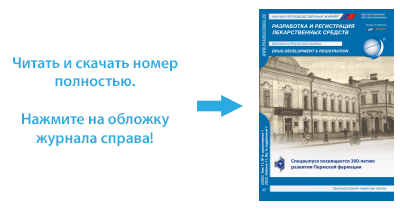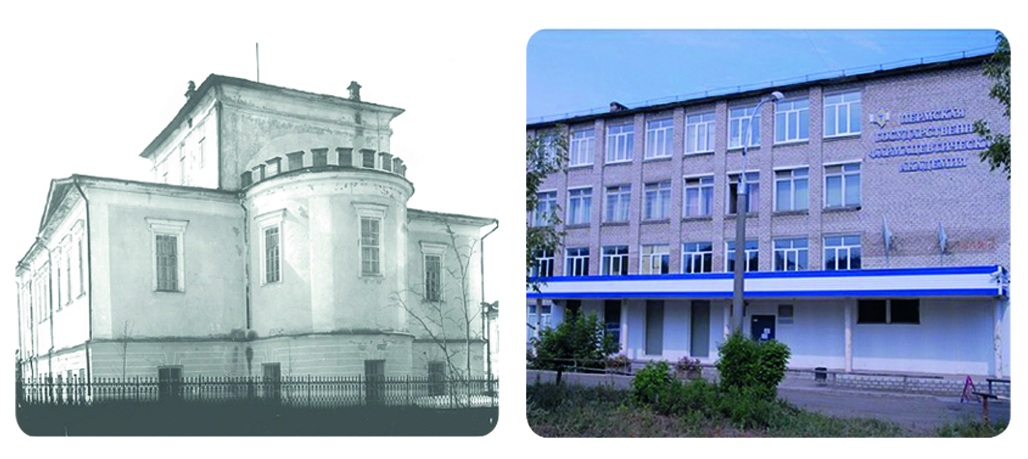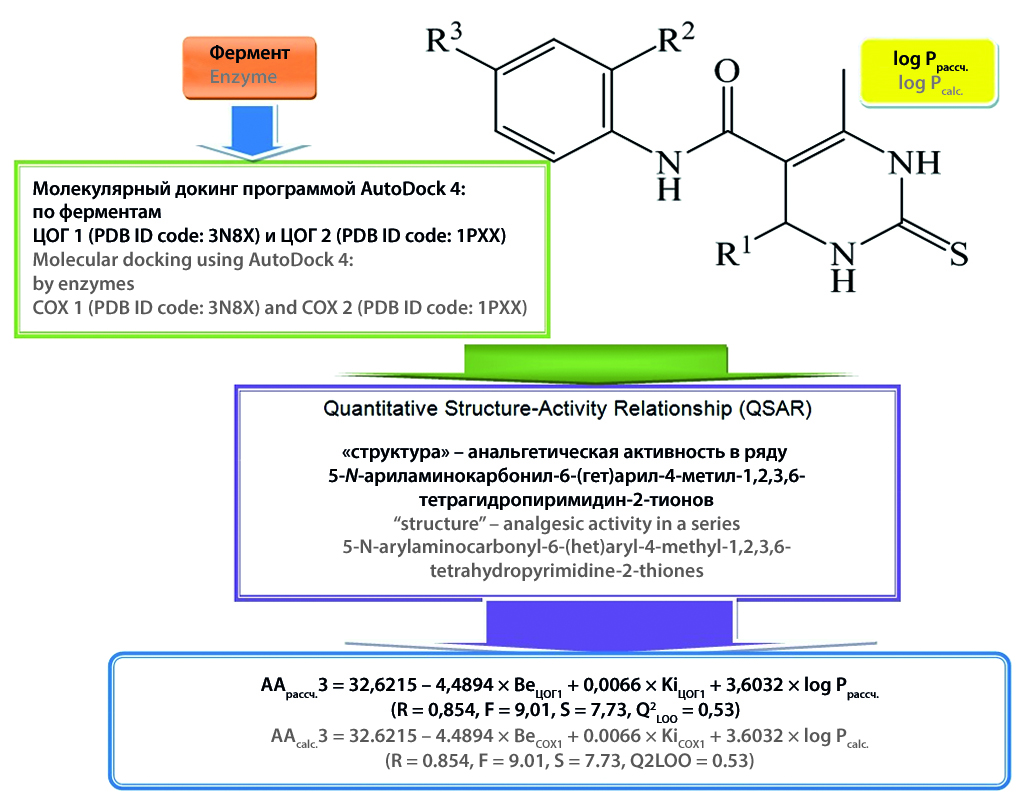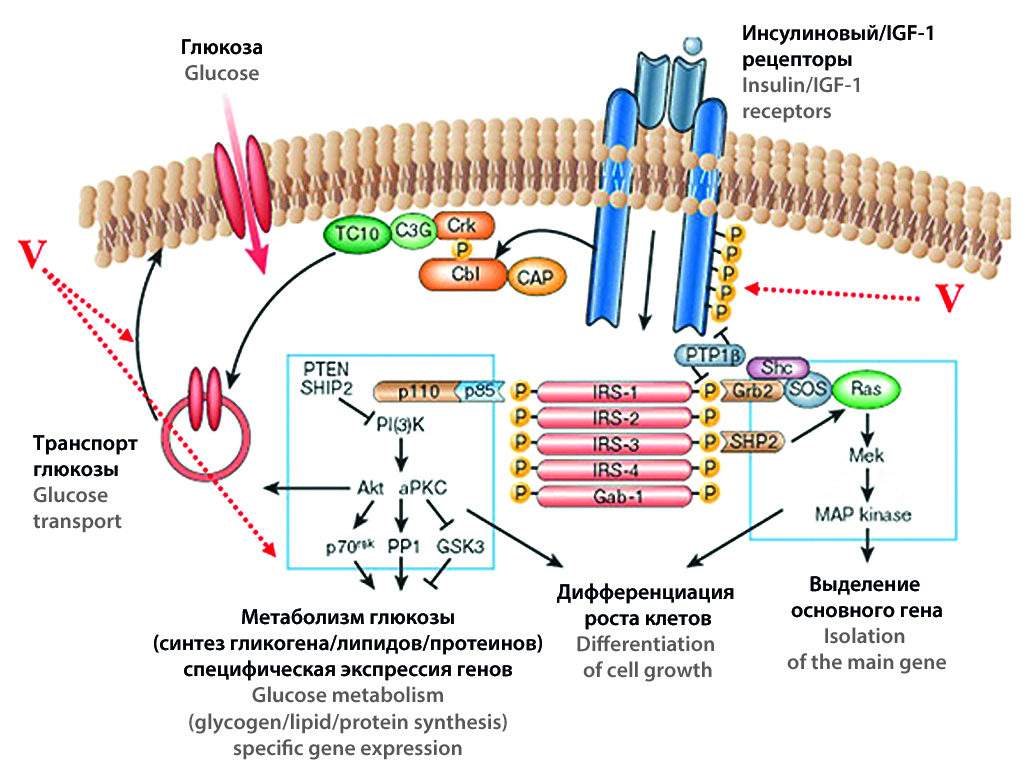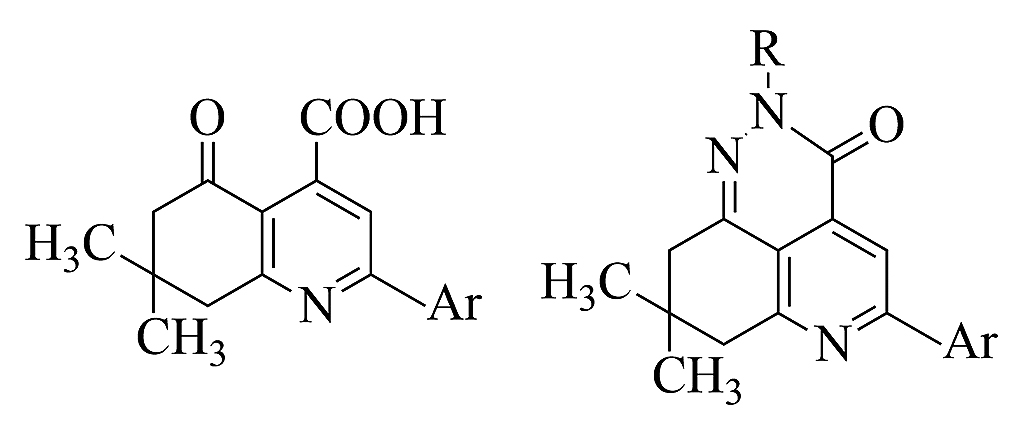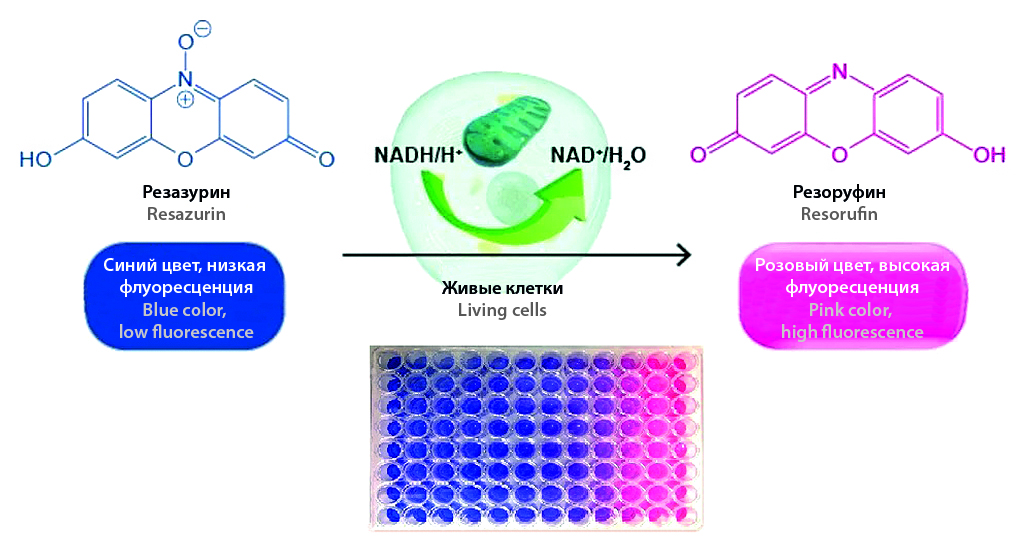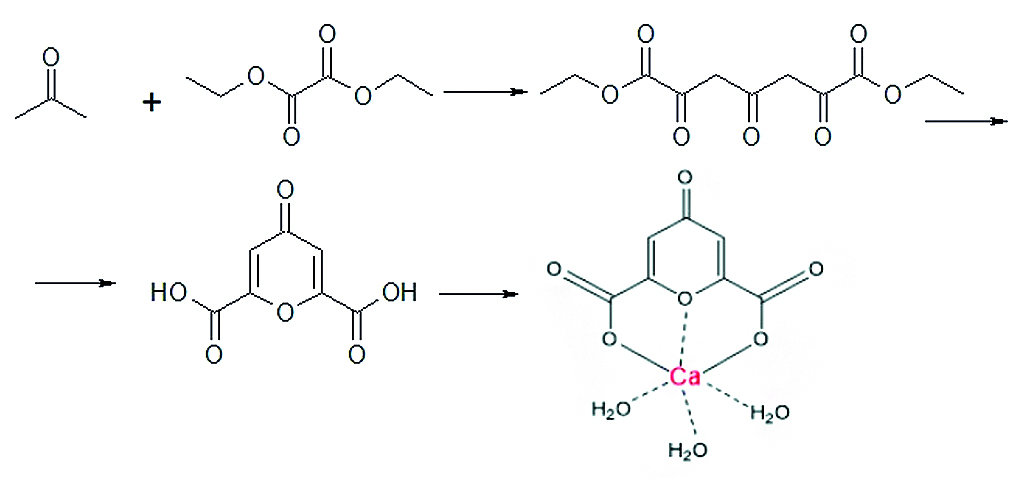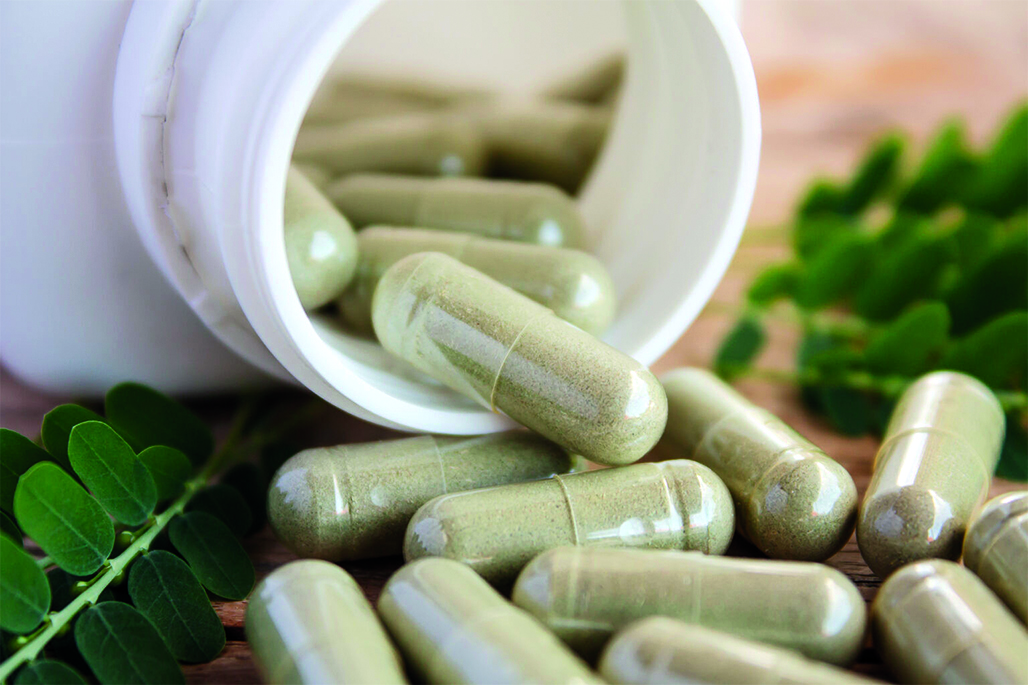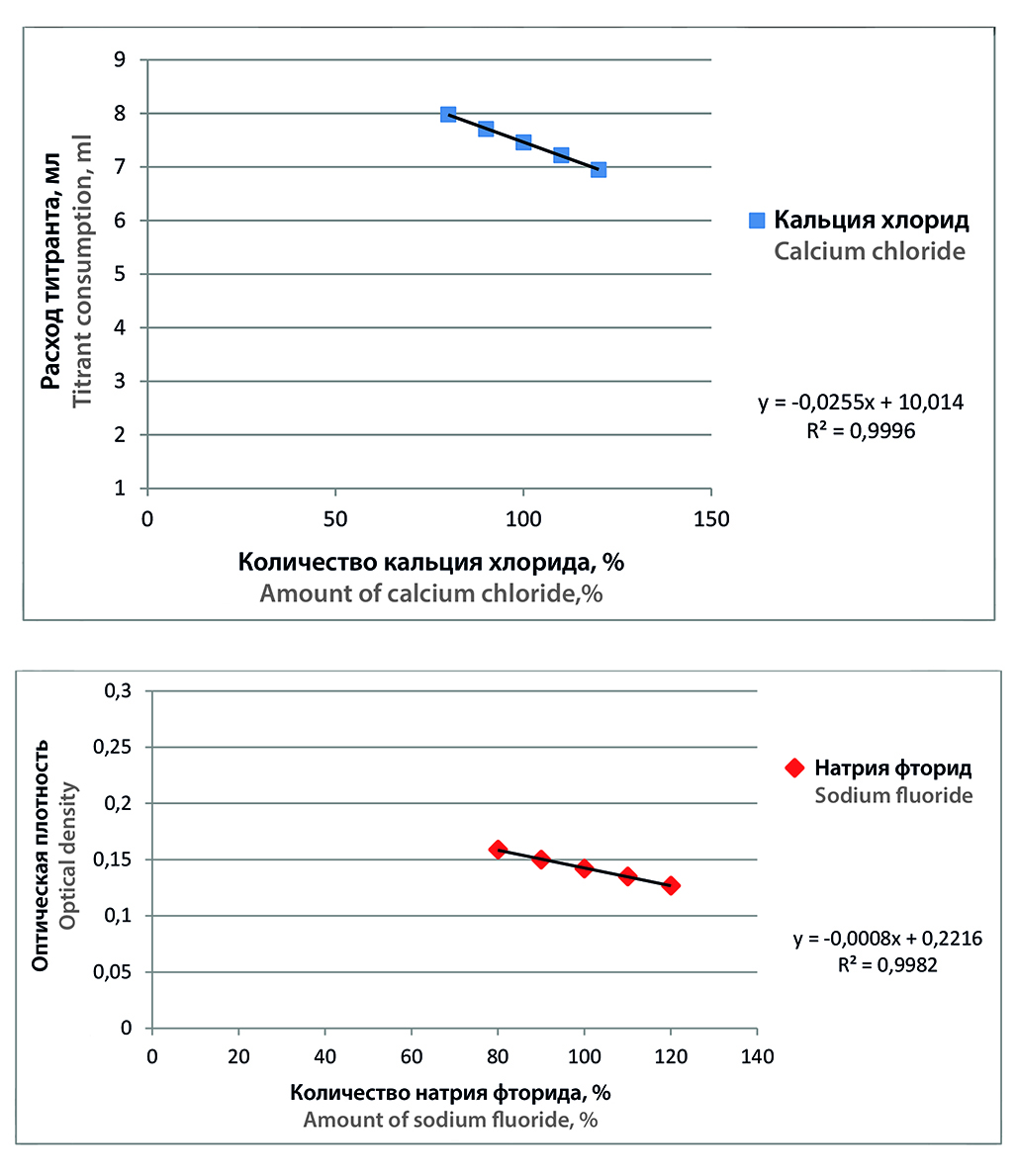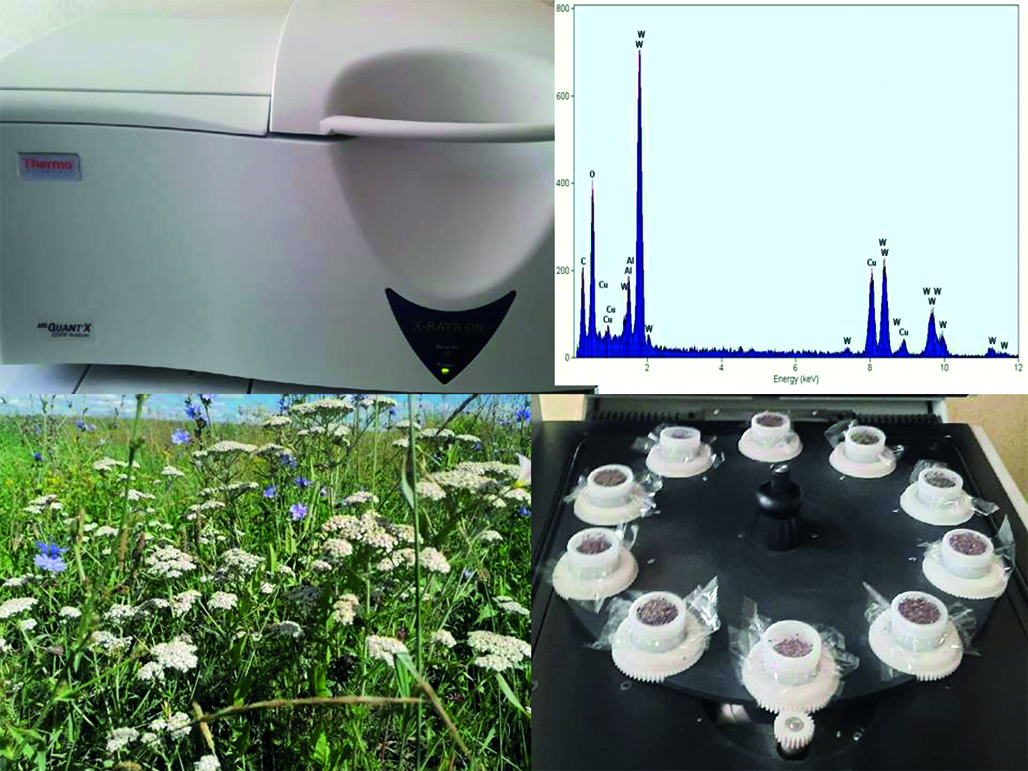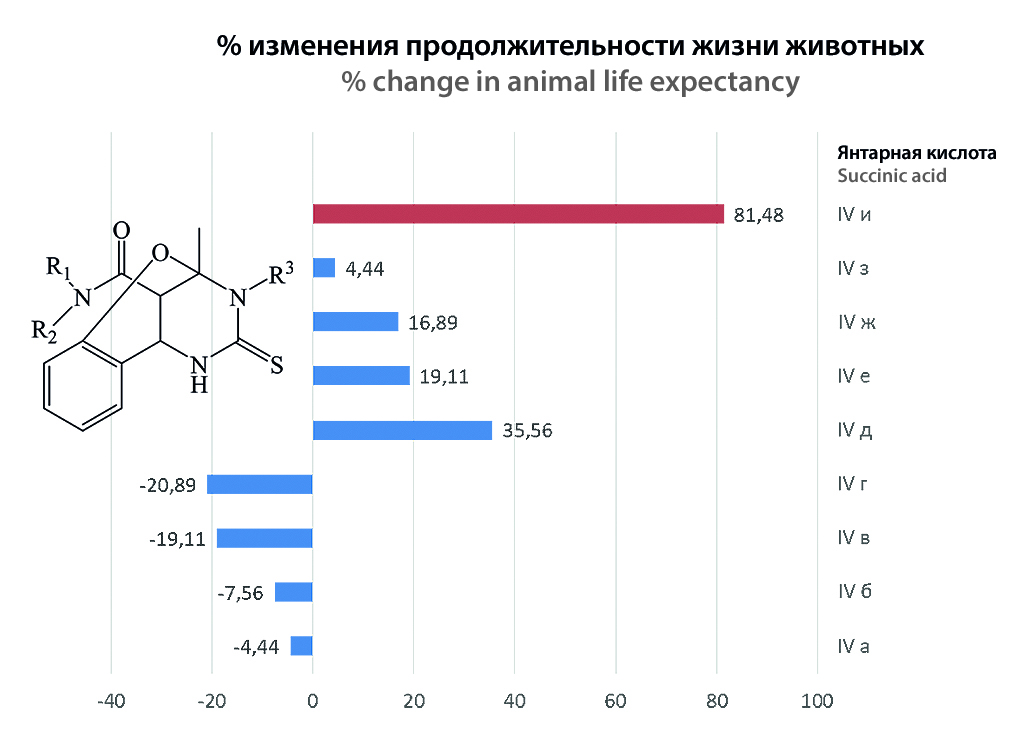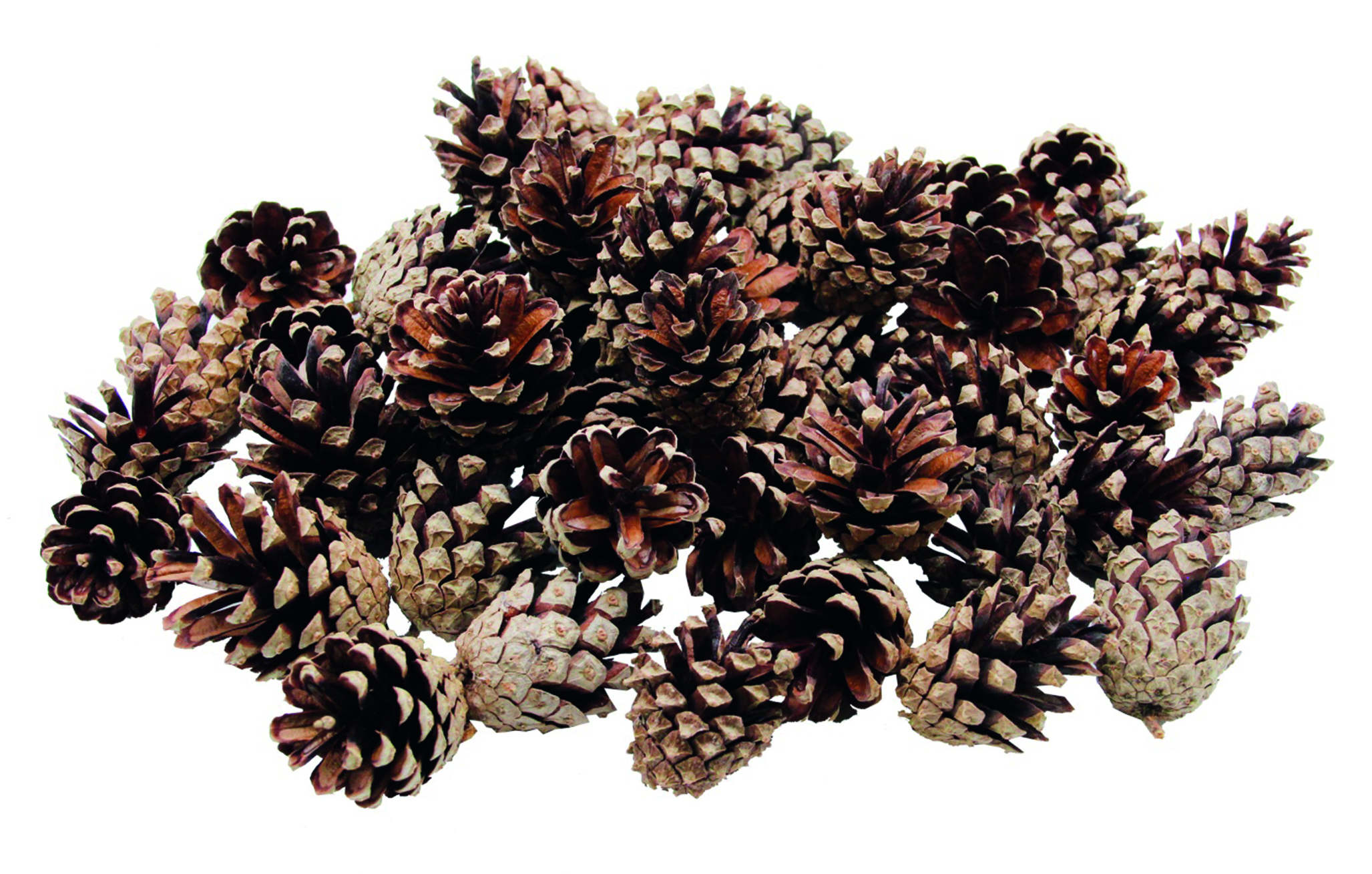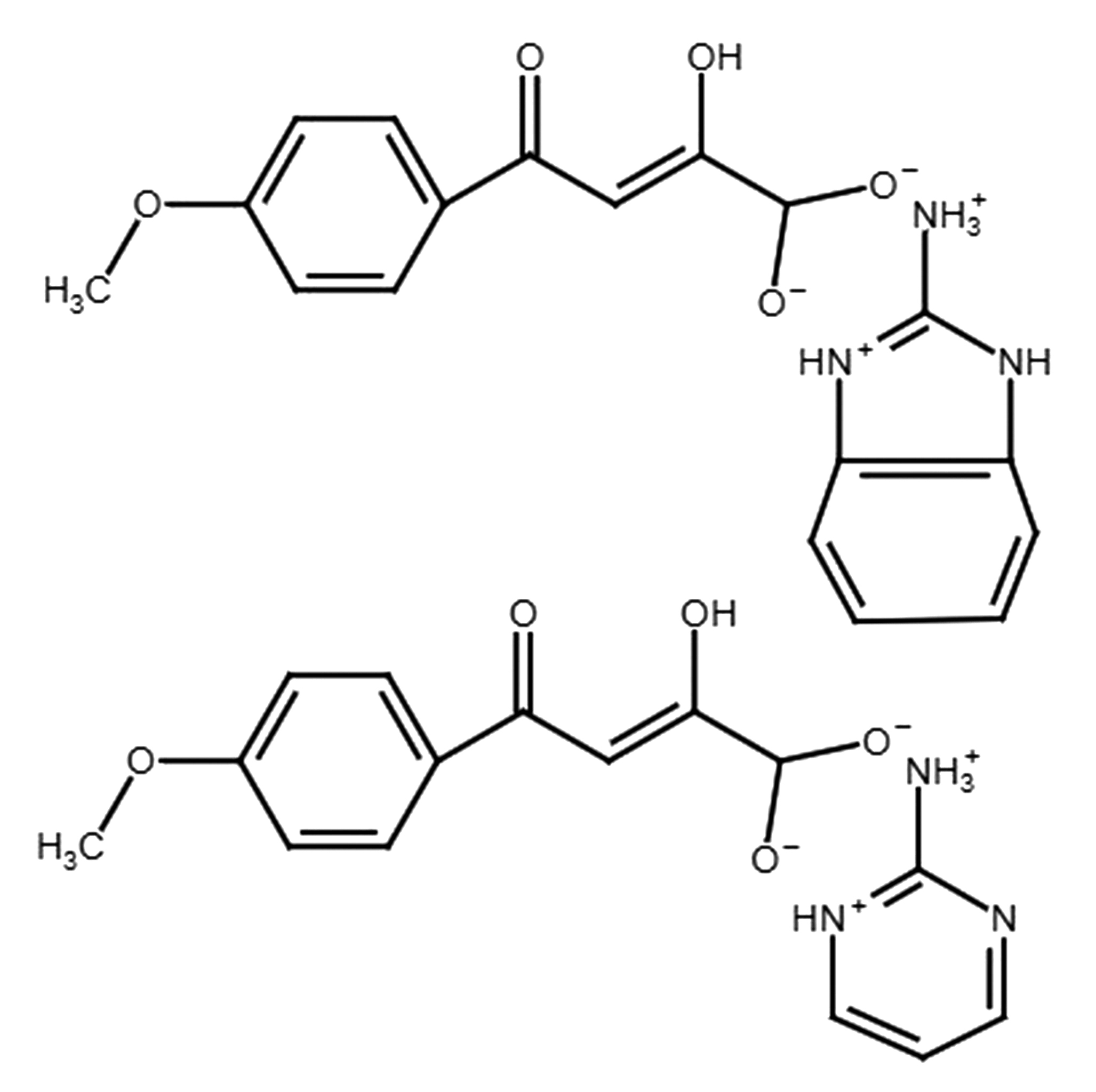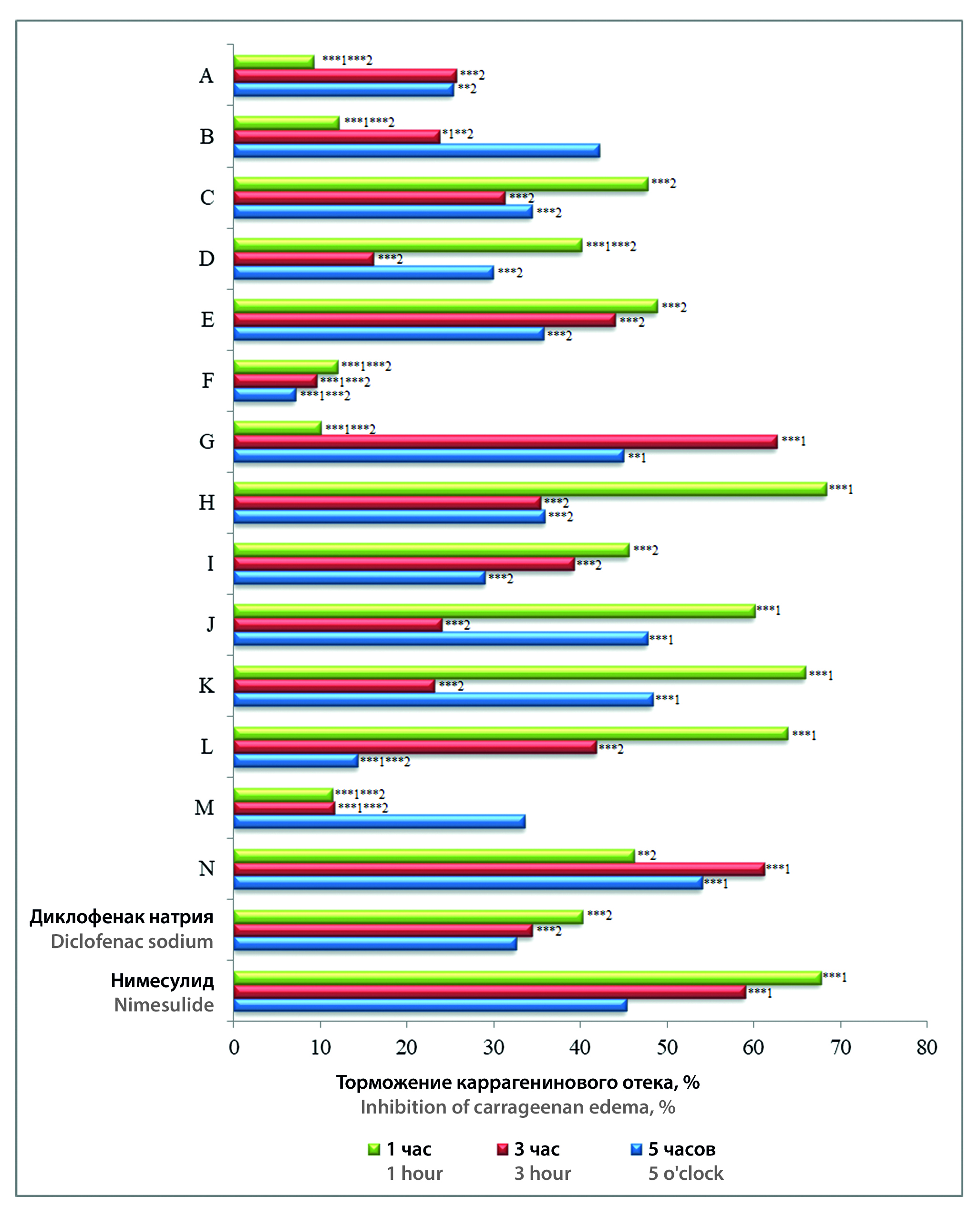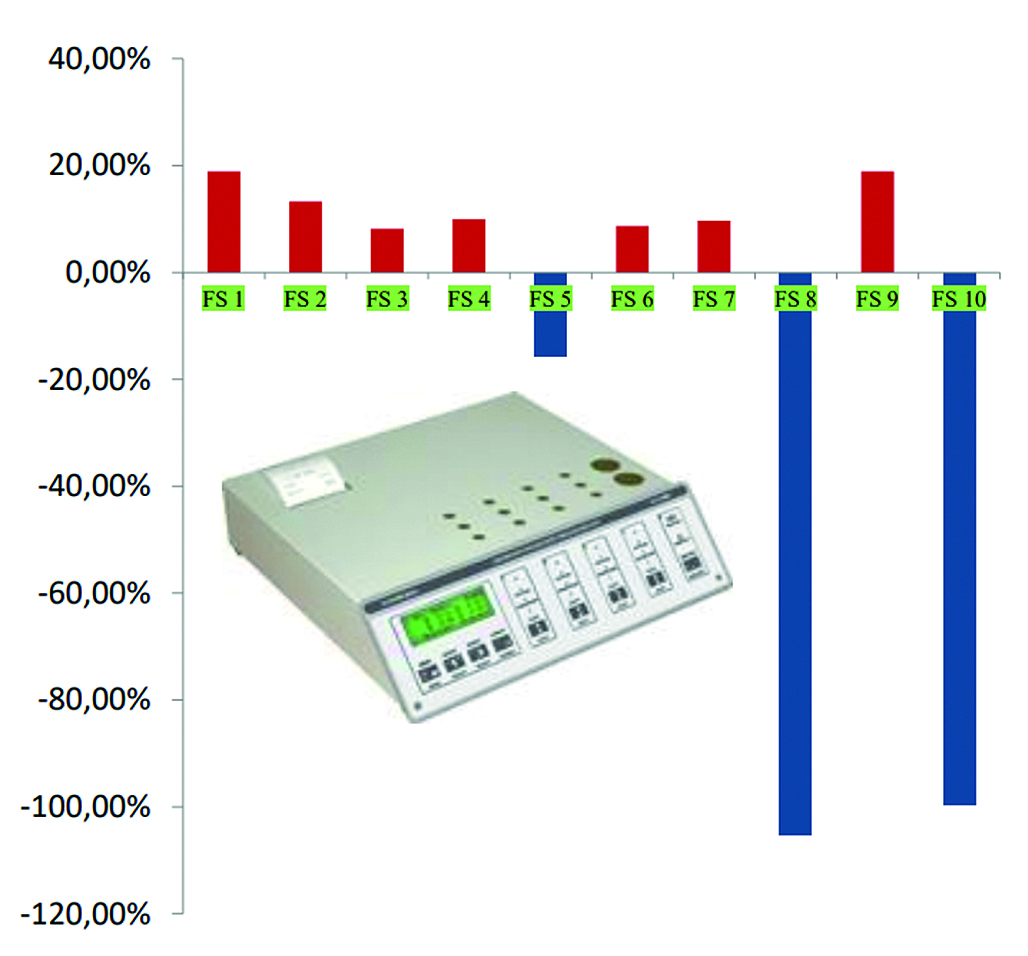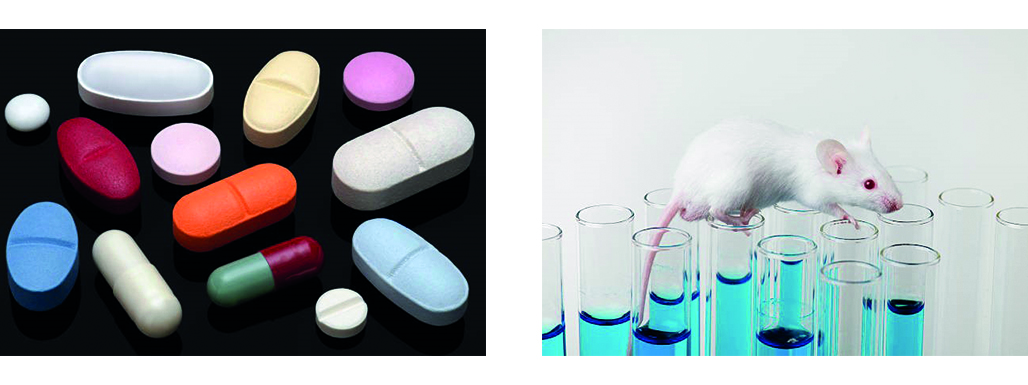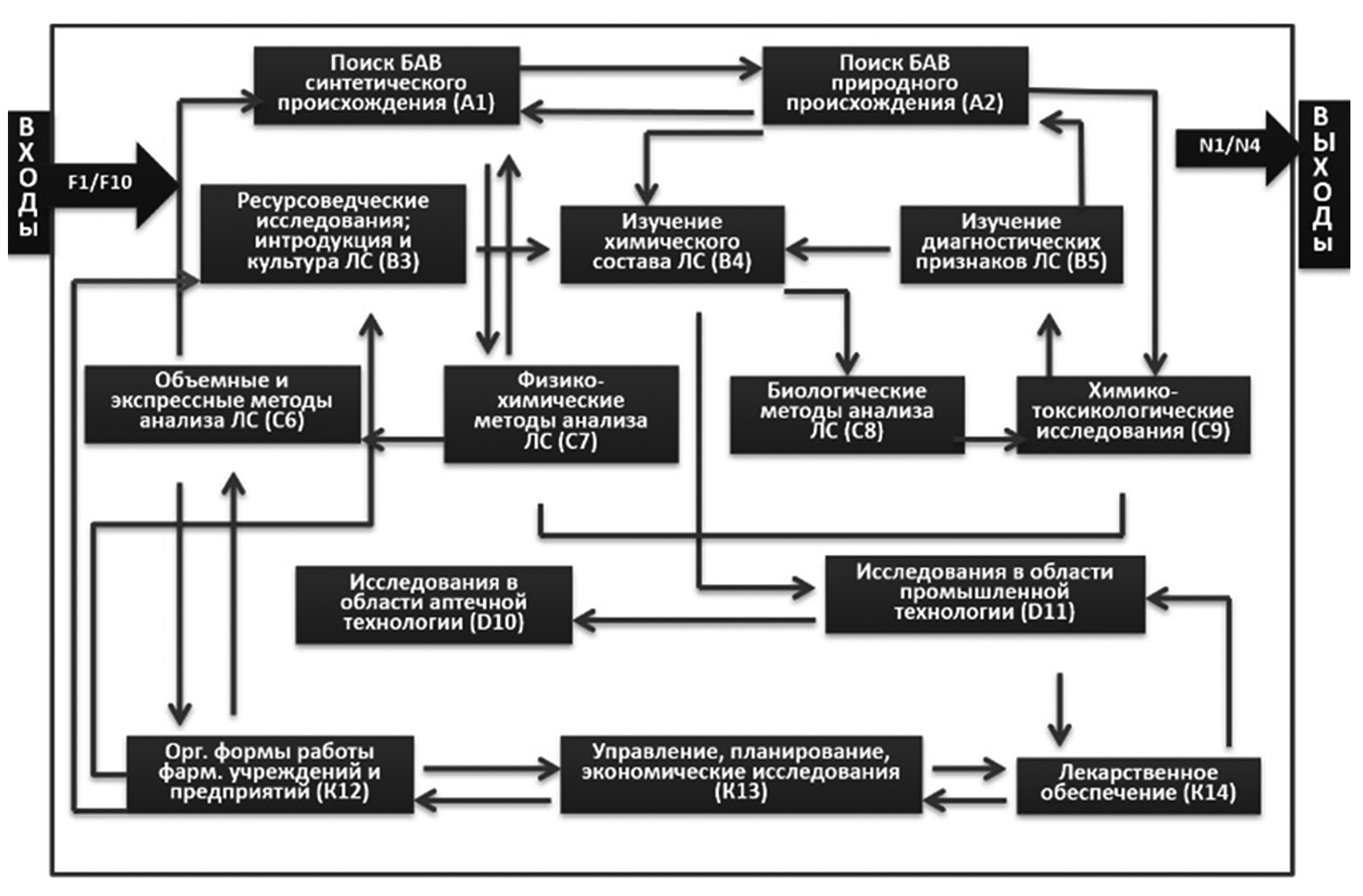FROM EDITOR
In 2023, the 300th anniversary of the founding of the city of Perm was celebrated. During this period, various areas of medicine and pharmacy in the region were formed. Pharmacists took an active part in the formation of many areas. During the years of formation of the new healthcare model “Semashko System”, teachers of the first center of pharmaceutical education in the Urals made a great contribution. The analysis of historical sources carried out by the authors made it possible to assess the path traveled by the pharmacy of the Kama region. Purpose: To identify and analyze of trends in the development of Perm pharmacy over the past 300 years since the founding of Perm. Materials and methods. The following objects of study were used: abstracts stored in the archives of the Perm State Pharmaceutical Academy (PSPhA); university reports stored in the archives of the museum of PSPhA; book and journal publications, materials of congresses of doctors and representatives of zemstvos of the Perm province. The research methods were: documentary analysis, methods of one-factor analysis: summary, grouping. Results. During the study, materials on the creation and development of various areas of medicine and pharmacy in the Perm region were studied. The directions of work of scientists at the Center for Pharmaceutical Education in the Urals on the formation of institutions of higher and secondary pharmaceutical education, methods and forms of advanced training for practical specialists are highlighted.
RESEARCH AND DEVELOPMENT OF NEW DRUG PRODUCTS
Introduction. Molecular modeling methods are very popular in the scientific community at the present time. The value of the pharmacological action depends on the affinity of the substance to the biological target. Molecular docking makes it possible to assess the degree of affinity of the studied compound with the active center of the molecular target. The enzyme cyclooxygenase (COX) plays a key role in the cascade of synthesis of proinflammatory cytokines and, as a consequence, in pain.
Aim. To identify the dependence "structure – analgesic activity" using the method of molecular docking for cyclooxygenase type 1 and type 2 in the series of 5-N-arylaminocarbonyl-6-(get)aryl-4-methyl-1,2,3,6-tetrahydropyrimidine-2-thions.
Materials and methods. 19 compounds 5-N-arylaminocarbonyl-6-(get)aryl-4-methyl-1,2,3,6-tetrahydropyrimidine-2-thions are objects of research The study of the interaction of tetrahydropyridine derivatives with COX 1 and 2 was carried out by the method of molecular docking by the AutoDock 4 program using scoring functions.
Results and discussion. Molecular docking of 5-N-arylaminocarbonyl-6-(get)aryl-4-methyl-1,2,3,6-tetrahydropyrimidine-2-thions (I–XIX) with COX 1 and 2 is described. Quantitative studies of the "structure – analgesic activity" in the studied series of compounds of the dependence of experimental values of analgesic activity (ААex.) on scoring functions (BeCOX1, KiCOX1, BeCOX2, KiCOX2) and physico-chemical descriptors (log Ppred., рКаpred., рКvpred.) were performed. By checking on an independent sample of 5 compounds, equation No. 3 (ААpred. 3 = 32,6215 – 4,4894 × Becox1 + 0,0066 × Kicox1 + 3,6032 × log Ppred. (R = 0,854, F = 9,01, S = 7,73, Q2LOO = 0,53) was found, with a high value of the correlation coefficient of the predicted values ААex. with experimental values (Rpred. = 0,878) and a minimum forecast error (Spred. = 6,74).
Conclusion. The "structure-activity" models for predicting analgesic activity in a series of 5-N-arylaminocarbonyl-6-(get)aryl-4-methyl-1,2,3,6-tetrahydropyrimidine-2-thions are obtained. The result of the prediction of biological activity is confirmed by the values of the correlation coefficient (R) obtained when testing models on independent samples.
Introduction. The epidemic increase in the incidence of diabetes mellitus (DM) makes it urgent to search for new antidiabetic agents. In clinical practice, there is an urgent question about improving and/or replacing insulin therapy for the disease. Vanadium compounds are of particular interest in connection with the identification of their multifactorial effects on the body, including insulin-like and hypoglycemic properties, which opens up prospects for the creation of a new generation of therapeutic agents for the treatment of types 1 and 2 diabetes. The focus of this review is on the structure and antidiabetic properties of vanadium complexes.
Text. This review is devoted to the analysis of scientific literature on studies of vanadium-containing compounds as potential antidiabetic agents. The mechanisms of antidiabetic activity of vanadium-containing complex compounds are discussed. The prospects for searching for oxovanadium(IV) complexes with O4-coordination have been assessed.
Conclusion. As a result of the analysis of the literature data, it was found that vanadium-containing complex compounds have a significant potential for use as antidiabetic agents. The relevance of the search for highly effective oxo-vanadium metal complexes based on ligands close to endogenous substrates, for example, based on derivatives of aroylpyruvic acid, is shown.
Introduction. Hypoxia is a violation of oxidative processes in tissues that occur when oxygen is insufficiently supplied to them or when its utilization is disrupted during biological oxidation. Chronic hypoxic damage plays an important role in the occurrence and development of various diseases, which necessitates the synthesis of new compounds with antihypoxic activity.
Aim. The purpose of this study is to synthesize and investigate the antihypoxic activity of 2-aryl-7,7-dimethyl-5-oxo-5,6,7,8-tetrahydroquinoline-4-carboxylic acids and their reaction products with substituted hydrazines.
Materials and methods. 2-Aryl-7,7-dimethyl-5-oxo-5,6,7,8-tetrahydroquinoline-4-carboxylic acids (I–VI) were obtained with high yields as a result of the interaction of 4-aroyl-2,4-dioxobutane acids with 3-amino-5,5-dimethylcyclohex-2-enone. Interaction of 2-aryl-7,7-dimethyl-5-oxo-5,6,7,8-tetrahydroquinoline-4-carboxylic acids with benzyl- and (2-phenylethyl)hydrazines 5-aryl-2-benzyl- and 2-(2-phenylethyl)-8,8-dimethyl-3,7,8,9-tetrahydro-2H-pyrido[4,3,2-de]cinnoline-3-ones (VII–XII) were obtained. As a result, 12 compounds were synthesized. The study of the antihypoxic activity of the obtained compounds was carried out in vivo on a model of normobaric hypoxia with hypercapnia.
Results and discussion. The synthesized compounds were tested for the presence of antihypoxic action. The most pronounced antihypoxic activity is characteristic of compounds VI and VIII, which have a methoxy group and a methyl radical in the para-position of the phenyl substituent at C5, respectively. The presence of chlorine in the structure of compound III, fluorine in compound X and the absence of substituents (compounds I and VII) contribute to the prohypoxic effect. According to the results of the study, both quinolincarboxylic acids and pyridocinnolines are potential antihypoxants.
Conclusion. A comparative analysis of the antihypoxic activity of the synthesized compounds was carried out, the relationship between their structure and severity of action was established, the most active substances were identified.
Introduction. An important direction of modern pharmacy is the production of new domestic substances with anti-infectious activity, within the framework of ensuring the technological sovereignty of the state. Optimization of methods for determining antimicrobial activity is an integral part of these studies. Previously obtained silver salts of pyrazoles and pyrazolecarboxamideshad high antimicrobial activity. This work presents the results of determining the antimicrobial activity of new biologically active compounds synthesized by a salt formation reaction with silver ions at the carboxyl group of aroylpyruvic acid amides containing anthranilic acid in the amide fragment.
Aim. Obtaining previously unknown amides of aroylpyruvic acids and their silver salts and studying their antimicrobial activity (AMA).
Materials and methods. New N-substituted amides of anthranilic acids and their silver salts were obtained by organic synthesis methods. To study their antimicrobial activity, a micromethod of double serial dilutions was used on screening strains of S. aureus ATCC 6538P, E. coli ATCC 25922, as well as E. faecalis ATCC 29212, S. aureus Wood 46, S. abony No. 103/39 for highly active compounds. Additionally, a method of accounting for the results was carried out using the phenomenon of fluorescence in interaction with rezazurin, indicating the presence of living microbial cells.
Results and discussion. The presence of antibacterial activity of silver salts 2a and 2b in relation to the studied strains was established: the minimum suppressive concentration (MPC) of compound 2a is 23.4–31.2 micrograms/ml, 2b is 3.9–5.8 micrograms/ml. When taking into account the results of the study of AMA using the phenomenon of fluorescence, it was found that they either coincide with the values of MPC determined visually, or indicate less antibacterial activity. Comparison of these results and seeding of the contents of the wells on a dense nutrient medium with respect to screening strains indicates that the suppression of fluorescence in experimental wells in the range of 99–82 % compared with the control is accompanied by the absence of bacterial growth (bactericidal effect), with fluorescence inhibition of less than 60 %, a pronounced growth of microorganisms is observed. In the intermediate range, the growth of single colonies is observed (bacteriostatic effect).
Conclusion. The results of the study showed that the new silver salts of N-substituted amides of aroylpyruvic acids have high antimicrobial activity. The correspondence of the type of antibacterial activity to the degree of fluorescence inhibition was established.
Introduction. The use of drugs derived from benzodiazepine for the treatment of various diseases continues to be relevant. Benzodiazepines are approved by most regulatory authorities around the world. Despite the large number of side effects and non-medical use, they are becoming more promising in emergency care for prolonged seizures and epileptic status.
Aim. To analyze the existing medicines on the market of the Russian Federation based on benzodiazepine derivatives and assess the prospects for development in this direction.
Materials and methods. The study was conducted on the basis of regulatory legal acts in the field of healthcare and the circulation of medicines, publications of Russian and foreign authors, the results of scientific research using situational, comparative, structural-logical and content analysis methods. The information base of the study was the online database "State Register of Medicines" (grls.minzdrav.gov.ru), databases of peer-reviewed publications: PubMed and Scopus.
Results and discussion. Data were obtained on the range of medicines derived from benzodiazepines according to the following indicators: international nonproprietary names, trade names, medicines, manufacturing countries and enterprises, dosage forms. The problem of "medicinal sovereignty" is discussed. Promising niches have been found for the development of innovative drugs derived from benzodiazepines.
Conclusion. It has been established that mainly domestic benzodiazepine-type drugs are represented on the Russian pharmaceutical market, while there is a certain shortage of pharmaceutical substances. In Russia, such dosage forms as films, transdermal plasters and preparations for the inhalation use of benzodiazepine derivatives are not registered. It is important to create innovative dosage forms capable of providing a fast, non-invasive and socially acceptable method of use and a high rate of adherence to treatment by patients.
Introduction. Osteogenic agents are used for pathologies associated with impaired bone formation, complications of bone fractures, the use of implants and endoprostheses, and tumor lesions of bone tissue. High osteogenic activity in vivo on the model of experimental osteomyelitis, in vitro and in situ on mesenchymal stem cells was revealed for calcium chelidonate, which is a promising substance for the production of osteogenic drugs.
Aim. Development of a method for obtaining the calcium chelidonate substance by chemical synthesis and methods of its standardization.
Materials and methods. The synthesis of chelidonic acid was carried out on the basis of diethyloxalate; calcium chelidonate – using synthesized chelidonic acid and anhydrous calcium chloride. The structure of the substances was confirmed by optical spectral methods, mass spectrometry, elemental and X-ray structural analysis. The quantitative content was assessed using a liquid chromatograph. Statistical processing of the results of quantitative measurements was carried out in the STATISTICA 8,0 program.
Results and discussion. As a result of the synthesis, chelidonic acid (4-oxo-4H-piran-2,6-dicarboxylic acid) was obtained, which is colorless or cream-tinged crystals. The structure of the resulting compound is confirmed by spectral characteristics and elemental analysis data. A method for obtaining the calcium chelidonate substance has been worked out, while the yield of the target product was 100 ± 5 %. By X-ray structural analysis, it was found that the synthesized compound is calcium chelidonate trihydrate [Ca(ChA)(H2O)3]n with M.M. (C7H8O9Ca) 276,15. Methods for establishing authenticity, purity and quantification of the substance have been developed. The amount of impurities in the resulting substance did not exceed 0.1 %, and the content of the main component ranged from 99,2 ± 0,20 to 100,4 ± 0,35 %.
Conclusion. Due to the limited resource reserves and the complexity of the process of extracting chelidonic acid from plant raw materials, a method for the chemical synthesis of calcium chelidonate substance with osteogenic activity is proposed. The obtained results provide prospects for further research in the direction of the development and introduction of synthetic calcium chelidonate as a new osteogenic drug, provided that the specific biological activity is comparable to the natural analogue.
PHARMACEUTICAL TECHNOLOGY
Introduction. The development of dosage forms of sedative action is an urgent task of pharmaceutical technology in view of the prevalence of diseases of the nervous system. Peony rhizomes and roots dry extract in combination with glycine have a sedative and anxiolytic effect, which is associated with an improvement in the psycho-emotional state. Taking into account the physicochemical characteristics and composition of biologically active substances of peony rhizomes and dry extract roots, it is necessary to select auxiliary substances that improve its technological properties.
Aim. Development of the composition and technology of hard gelatin capsules containing dry peony rhizomes and roots, dry extract and glycine.
Materials and methods. Objects of research – dry peony rhizomes and roots (LLC "Kazan Extract Plant", Russia), glycine (JSC "Biokhimik", Russia). Excipients: apple pectin (LLC TD "HIMMED", Russia), starch (LLC TD "HIMMED", Russia), aerosil (LLC TD "HIMMED", Russia), lactose (LLC TD "HIMMED", Russia), microcrystalline cellulose (LLC TD "HIMMED", Russia), basic magnesium carbonate (LLC TD "HIMMED", Russia), magnesium oxide (LLC TD "HIMMED", Russia).
Results and discussion. The composition and technology for obtaining capsules containing dry peony rhizomes and roots, dry extract and glycine, have been substantiated. The quality indicators of peony rhizomes and roots of dry extract in combination with glycine and developed capsules were determined.
Conclusion. The composition of capsules of peony rhizomes and roots of dry extract and glycine has been developed, auxiliary substances have been selected to ensure satisfactory technological properties of the mass for filling the capsules.
Introduction. Nowadays liquid combined therapeutic and prophylactic bacteriophages produced by various manufacturers are widely used. In order to expand the Russian market with highly effective antibacterial phagopreparations it is urgent to develop solid dispersed dosage forms of bacteriophages in the form of solid capsules.
Aim. Optimization of biomass composition for encapsulation of antibacterial drug Sekstafag® (Piobacteriophage polyvalent) capsules.
Materials and methods. The object of research for the development of encapsulated antibacterial drug is liquid combined polyvalent bacteriophage Sekstafag® (Piobacteriophage polyvalent), which is a mixture of sterile filtrates of six phagolysates of bacteria Staphylococcus spp., Streptococcus spp., Proteus spp., Pseudomonas aeruginosa, Klebsiella pneumoniae, enteropathogenic Escherichia coli. Pharmaceutical-technological tests were carried out according to GF. Granulate was investigated according to the following parameters: description, bulk density, friability. Solid capsules Sekstafag® were tested by the following parameters: mass uniformity, disintegration, acid resistance of bacteriophages in capsules, dissolution. The lytic activity of bacteriophages was evaluated by Appelman’s method. Optimization of Sekstafag® drug formulation in the form of capsules was carried out using generalized Harrington’s desirability function.
Results and discussion. In order to optimize the composition of biomass for encapsulation, pharmaceutical compositions consisting of combined bacteriophage Sekstafag® and auxiliary substances were prepared. The influence of excipients on the technological quality parameters of mixtures and capsules of model compositions was studied. According to the empirical system of preferences (desirability) it was revealed that the optimal pharmaceutical-technological characteristics (granulate description, bulk density, bulkiness, capsule mass uniformity, disintegrability, lytic activity, acid resistance of bacteriophage, dissolution) are possessed by the model composition containing combined polyvalent Sekstafag®, methylcellulose, sorbitol, lactose, pectin, sodium alginate, calcium carbonate, magnesium stearate. Originality of the developed composition Sekstafag® (Piobacteriophage polyvalent) in the form of capsules is confirmed by the patent of the Russian Federation № 2660355 "Antibacterial pharmaceutical composition for oral use containing bacteriophages". The drug Sekstafag® (Piobacteriophage polyvalent) capsules, is stable when stored for 18 months at temperatures from 2 to 8 °C.
Conclusion. As a result of the conducted complex pharmaceutical-technological research using Harrington’s desirability function the optimal composition of antibacterial preparation Sekstafag® (Piobacteriophage polyvalent) in the form of hard capsules No. 2 was developed.
Introduction. Interest in herbal preparations is increasing every year, as the variety of chemical composition and pharmacological action of plants makes it possible to discover and create drugs whose therapeutic effect is due to a complex of biologically active substances. It is important for the effective treatment of diseases to have a properly selected dosage form, which provides both ease of use and targeted use of the action of the pharmacologically active drug contained in it. Therefore, obtaining and introducing new plant extracts into medical practice can become promising in the field of creating soft dosage forms. Strawberry garden leaf extract dry (strawberry extract) is one of the potential substances for obtaining effective and safe medicines. According to the results of earlier studies conducted by the staff of the Perm State Pharmaceutical Academy of the Ministry of Health of the Russian Federation, a high anti-inflammatory activity of strawberry extract was proved, comparable to the activity of the synthetic drug Indomethacin. Studies of the chronic toxicity of the extract, allergenic, immunotoxic properties and reproductive toxicity in the framework of preclinical studies have shown the safety of the obtained extract and the possibility of using the substance for further development of medicines based on it. In this regard, the study of technological parameters and pharmacological activity of a soft dosage form based on strawberry extract is of practical interest for improving the drug supply of the population and expanding the range of medicines based on plant extracts with anti-inflammatory and antimicrobial effects.
Aim. Development of a soft dosage form based on strawberry leaves of dry extract and study of its pharmacological activity.
Materials and methods. For the study, gels with an active substance – strawberry leaves with dry extract (JSC "Biohimmash", Russia, shelf life – 2 years), the main components – sodium carboxymethylcellulose C75 (TU 2231-002-50277563-2000, LLC "Base chemical products "Yugreactive", Russia, 151118, term storage 3 years), methylcellulose 35 (TU 2231-107-57684455-2003, JSC "UZPH", Russia, 221218, shelf life 3 years), sodium alginate (TU 15-02-544-83, LLC "Base сhemical products "Yugreactive", Russia, 151018, shelf life 3 years), glycerol (FS.2.2.0006.15, JSC "Kupavnareaktiv", Russia, 082018, shelf life 3 years), purified water (FS FS.2.2.0020.18), obtained at the reverse osmosis unit UVOI-"MF" 1812S6 (JSC "NPK MEDIAN FILTER", Russia). Вiopharmaceutical and technological methods were used in the course of the research. Antimicrobial activity was determined according to the OFS.1.2.4.0010.15 by diffusion into agar. Anti-inflammatory activity was studied on a model of acute inflammatory edema caused by subplantar injection of 0.1 ml of 1 % aqueous solution of carrageenan into the hind paw of a rat. The obtained data were processed with the calculation of the Student's t-test for independent samples. The data were considered reliable at p < 0.05.
Results and discussion. Based on technological, biopharmaceutical and pharmacological research methods, the composition of a gel from strawberry leaves with dry extract, which has antimicrobial and anti-inflammatory effects, was proposed and substantiated for the first time. The biopharmaceutical availability of the gel was determined by diffusion into agar gel. The antimicrobial activity of the gel from strawberry leaves with dry extract and its anti-inflammatory activity on the model of carrageenan edema with external application of the studied dosage forms were studied.
Conclusion. The study shows the possibility of expanding the range of drugs for external use with antimicrobial and anti-inflammatory activity.
ANALYTICAL METHODS
Introduction. Vascular pathologies associated with thromboembolism are common complications and the leading cause of morbidity and mortality among patients of various nosological groups. Previously, we obtained water-soluble 2-hydroxy-4-oxo-4-R-2-butenoates of hetarylammonium, which exhibit a significant pharmacological effect on the blood coagulation system». A compound with a pronounced anticoagulant effect was found in various routes of administration. It was of interest to study various methods of confirming the authenticity of a potential anticoagulant.
Aim. Development of methods for identification of a potential anticoagulant 2-hydroxy-4-oxo-(4-chlorophenyl)-2-butenoate of thiazolinammonium.
Materials and methods. The studies were carried out on three series of the substance 2-hydroxy-4-oxo-(4-chlorophenyl)-2-butenoate of thiazolinammonium obtained in laboratory conditions. The melting point of BAS was measured by the capillary method according to GF XV OFS.1.2.1.0011 "Melting point". The solubility of the substance was determined in accordance with GF XV of the OFS.1.2.1.0005 "Solubility". The absorption spectra in the IR region were taken in accordance with GF XV of the OFS.1.2.1.1.0002 "Spectrophotometry in the middle infrared region". Absorption spectra in the UV region were taken in accordance with GF XV of the OFS.1.2.1.1.0003 "Spectrophotometry in the ultraviolet and visible regions". In carrying out qualitative reactions, reagents prepared in accordance with GF XV of the OFS were used.1.3.0001 "Reagents. Indicators".
Results and discussion. A description of the substance has been carried out. The melting point and solubility of the compound were determined. Spectra in the IR and UV regions of the spectrum were taken. Methods were selected, and qualitative reactions of authenticity of a potential anticoagulant were carried out.
Conclusion. The studied characteristics of the new BAS can be used in the standardization of the substance according to the indicators "Description", "Solubility", "Identification", "Melting point". These indicators characterize the physico-chemical properties of 2-hydroxy-4-oxo-(4-chlorophenyl)-2-butenoate of thiazolinammonium, and will be included in the draft regulatory documentation for the substance in the future.
Introduction. Due to the global pharmaceutical pollution of water bodies in many countries, there is currently an increasing interest of researchers in finding effective, including microbiological, ways of processing pharmaceutical waste to obtain new useful products based on them. The results of previous studies have shown that the product of bacterial destruction of paracetamol exhibits pronounced stimulating properties in relation to medicinal plants of the aster, linseed, clear-flowered, plantain, etc. families. There is no information about the effect of this product on plants of the liliaceae family.
Aim. To investigate the effect of the paracetamol biodegradation product on the quantitative indicators of the anatomical structure of the lily of the valley leaf – Convallaria majalis L., fam. Liliaceae.
Materials and methods. The experiments were laid in the Kirov region (2021, 2022) in accordance with the Guidelines for Conducting Registration Tests of Growth Regulators (2016). The scheme of the experiment: the control area – natural watering with water; the test area – watering with the product of biodegradation of paracetamol obtained on the basis of the laboratory of alkanotrophic microorganisms of the PFRC UB RAS (Perm); the reference area – watering with the growth stimulator "Zircon" (NRPP "NEST M", Russia). Quantitative parameters of the anatomical structure of the lily of the valley leaf were evaluated by the linear dimensions of the epidermis, elements of the conducting system and mesophyll. Viewing, photographing and processing of photographs was carried out using a microscope Motic (Motic Deutschland GmbH, Germany) in the program Motic Image 2000. Mathematical processing of experimental data was carried out by the method of variance analysis using Excel 2019, STATISTICA 12.6, STATGRAPHICS Plus 5.1 programs.
Results and discussion. Anatomical examination showed an increase in the size of the cells of the upper and lower epidermis of the lily of the valley leaf in the designated growing seasons on the accounting sites treated with a product of the biodegradation of paracetamol and a standard ("Zircon") in comparison with the control (water). When using the biodegradation product of paracetamol, an increase in the thickness of the mesophyll by 10–16 % and the number of layers by 14–30 % was recorded. When using the growth stimulator "Zircon", the thickness of the mesophyll and the number of its layers increased by 3–6 % and 8–15 %, respectively. The increase in the thickness of the phloem and xylem of the conductive beam when treated with the paracetamol biodegradation product was 20–30 % greater than in the control, and 2 times greater than when treated with the growth stimulator "Zircon".
Conclusion. The product of the biodegradation of paracetamol in different years of use, regardless of environmental factors, shows a pronounced stimulating effect on the lily of the valley of the May, significantly increasing the quantitative indicators of the anatomical structure of the leaf compared with the growth stimulator "Zircon" and control (water). The obtained data can be used in medicinal plant growing in the development of agrotechnical methods for growing raw materials of the lily of the valley of the May, as well as in the formation of a dossier when registering this product as a new plant growth stimulator.
Introduction. As a result of a complex of scientific and experimental studies carried out at the Department of Pharmaceutical Technology of the State Pharmacy of Pharmaceuticals, a gel was developed for remineralization of dentin in order to carry out drug treatment of medium and deep caries. In the developed gel, along with the remineralizing effect, an antibacterial effect was achieved, which is necessary in the treatment of dentin caries due to the introduction of chlorhexidine bigluconate (CHB). The proposed composition simultaneously contains the main remineralizing ions – calcium, phosphate and fluoride in a free active state. Due to this, a significant increase in their penetration into the dentin is ensured. During the preparation of regulatory documentation for the gel for the treatment of dentine caries, validation of methods designed to control the quality of active substances was carried out.
Aim. Validation of methods for testing the authenticity and quantification of active substances in the gel for dentine remineralization.
Materials and methods. To achieve this goal, active pharmaceutical substances of pharmacopoeial quality are used. When developing test methods, pharmacopoeial and non-pharmacopoeial reactions to reacting cations and anions were used. For the quantitative determination of the chloride compound, the complexometric method, the back titration method is used, for potassium phosphate, the disubstituted acidimetric method, for sodium fluoride, the photoelectrocolorimetric method, for chlorhexidine bigluconate, the lauryl sulfate method. The objects of study were five serial samples of gels.
Results and discussion. As a result of the studies, methods of testing for authenticity were developed, it was found that the proposed methods are characterized by a negative analytical signal on model mixtures free of the analyte and placebo, and a positive analytical signal on model mixtures of various compositions containing the analyte. The validation characteristics of methods for the quantitative determination of active substances in the gel were studied, positive results were obtained, the proposed methods can be used for inclusion in the regulatory documentation for the developed gel.
Conclusion. When evaluating the validation characteristics of the proposed methods, it was found that the methods of testing for authenticity and quantitative determination of active substances in the gel are specific, the methods of quantitative determination are characterized by accuracy and repeatability, a linear dependence in the analytical region of ±20 % of the declared amount of active substances, which allows them to be used for reliable assessment of the quality of the developed gel.
Introduction. Environmental monitoring is an important area of modern scientific research. This is due to the anthropogenic impact on the environment, which often negatively affects the diversity of the Russian medicinal flora. The use of modern instrumental analytical methods of medicinal plant raw materials is relevant due to the intensive development of science. The content of heavy metals, the elemental composition and the level of background radiation are important characteristics of ecological purity and safety of medicinal plant raw materials. These characteristics are of interest for assessing the possibility of harvesting and using medicinal plants at localization. The generally accepted instructions for harvesting were used.
Aim. Investigation of the possibilities of using X-ray fluorescence and radiation methods for environmental monitoring of medicinal plant raw materials.
Materials and methods. The research object was Achilleae millefolii herba. The harvestment of plant raw materials was carried out in the Bardymsky, Chernushinsky, Uinsky, Kishertsky, Oktyabrsky, Suksunsky, Ordinsky, Sivinsky districts of the Perm Region in the summer in 2022–2023. The X-ray fluorescence analyzer (XFA) ARL QUANT'X EDXRF was used to determine heavy metals and assess the elemental composition of plants. The analysis was carried out according to the methodology that was developed by scientists of the Pharmacognosy Department at the Perm State Pharmaceutical Academy. The radiation background in raw materials was assessed by using a special dosimeter RADEX RD1503.
Results and discussion. As a result, it was found that harvesting of Achilleae millefolii herba is possible in the Perm Region studied areas. Bardymsky, Uinsky, Kishertsky, Ordinsky, Chernushinsky districts are the most recommended for harvesting plant raw materials. Samples from these areas are ecological purity and safe for use as medicinal raw materials and have a diverse elemental composition. The content of heavy metals does not exceed the maximum permissible concentrations according to the regulatory documentation requirements. The background radiation level does not exceed the threshold value compared to other areas in the Russian Federation.
Conclusion. X-ray fluorescence analysis is a suitable and reliable analytical method for determining elements in plant raw materials. XFA is a multi-element express method that allows analyzing a sample with minimal sample preparation. The advantages of the method are good reproducibility, high sensitivity, and efficiency. Research continues.
PRECLINICAL AND CLINICAL STUDIES
Introduction. Antioxydant activity, membrane stabilizing and cytoprotective effect of dihydropyrimidin analoges are widely described in various literary sources. One of the importantant mechanisms of action of antioxidants is their antihypoxic activity. It is the ability to increase tissue resistance to hypoxia. The search for drugs to increase the body's resistance under hypoxic conditions is an actual task in experimental and clinical pharmacology.
Aim. Study of the antihypoxic activity of new S-analogs of dihydropyrimidin-2-ones and their condensed derivatives in various models of hypoxia.
Materials and methods. 13 compounds S-analogs of dihydropyrimidin-2-ones and their condensed derivatives are objects of research. Their structure has been confirmed by spectroscopy methods. The antihypoxic activity was carried out by recommended methods for preclinical study of new pharmacological substances.
Results and discussion. This paper presents the results of testing the obtained compounds of different structures on three models of hypoxia. The activity of a number of condensed tricyclic derivatives of dihydropyrimidine-2-thiones was studied in more detail using a model of acute normobaric hypoxia with hypercapnia.
Conclusion. The compounds did not demonstrate high antihypoxic activity; some «structure-property» patterns were revealed.
Introduction. Among wild plants that have an effect on the nervous system, species of the genus Melampyrum L. are distinguished, in particular, Melampyrum sylvaticum L. Extracts from the aerial part of the plant have long been used in folk medicine as sedatives and anticonvulsants. Currently, a number of studies are being carried out to confirm the possibility of using wildflower and drugs based on it in scientific medicine, as well as to obtain a drug with low toxicity, complex sedative and anticonvulsant activity, which will expand the arsenal of drugs used to treat diseases of the nervous system.
Aim. To investigate the in vivo acute toxicity, anticonvulsant and sedative activity of a dry alcohol extract from the aerial part of Melampyrum sylvaticum.
Materials and methods. The extract was obtained by extracting substances from the aerial part of Melampyrum sylvaticum with 50 % ethanol, by the method of repercolation with an equal loading of raw materials, followed by evaporation to a dry residue. The study of pharmacological properties was carried out on nonlinear white mice of both sexes weighing 17–25 g. Acute toxicity of the extract was determined by oral administration in doses up to 5000 mg/kg. Anticonvulsant activity was evaluated in the corazole convulsion test, sedative activity was evaluated in the open field test.
Results and discussion. When determining the acute toxicity of a dry alcoholic extract from the aerial part of Melampyrum sylvaticum, there was no lethality in the experimental group of animals. LD50 could not be determined. In the corazol convulsion test, it was shown that oral administration of the extract at a dose of 100 mg/kg does not affect the latent period of convulsions, but significantly increases the life expectancy of animals. At a dose of 200 mg/kg, the latent period of seizures and life expectancy significantly increased, and the survival rate of animals was 20 %. When studying sedative activity of the extract from Melampyrum sylvaticum in the open field test, a decrease in vertical activity, a decrease in the number of vertical stands, a decrease in horizontal activity along the periphery and the number of animals entering the center of the area were noted, which indicates a suppression of orienting-exploratory behavior. In the experiment, there was a decrease in the intensity of grooming as an indicator of anxiety for this group of animals. A course of administration of the extract for thirty days led to a decrease in the vertical activity of mice and inhibition of orienting-exploratory behavior.
Conclusion. It was found that a dry alcoholic extract from the aerial part of Melampyrum sylvaticum exhibits biological activity in animal experiments, compensating for the effect of corazol, and has a pronounced anticonvulsant and sedative effect. The LD50 of the extract when administered orally was more than 5000 mg/kg.
Introduction. Fatty hepatosis is a widespread metabolic disease. There is an annual increase in cases of detection of fatty hepatosis both in Russia and around the world. An urgent task is to search for new medicines for the treatment and prevention of the development of fatty hepatosis.
Aim. Investigation of the composition of procyanidins and the biological activity of pine cones extract on a model of fatty hepatosis in vivo.
Materials and methods. To obtain the extract, cones of pine harvested on the territory of the Perm Region in December were used. The extract was obtained by processing raw materials with hot water. The component composition of procyanidins in the extract was determined using ultra-efficient liquid chromatography with a mass selective detector. Hepatoprotective activity was studied on a model of fatty hepatosis induced by the introduction of carbon tetrachloride in vivo on white mongrel rats. Silymarin was used as a reference for comparison.
Results and discussion. As a result of chromatographic examination, the following procyanidins were identified in a dry aqueous extract of pine cones – B2, B3, C1, C2, D1. As a result of hepatoprotective activity, it was found that no changes were detected in the control (intact) group during the pathohistological examination of the liver. Index (degree) of steatosis: 0. In the experimental group, whose animals were injected with carbon tetrachloride without subsequent treatment, it was found that about 50 % of hepatocytes of the histological section were in a state of macro- and microvesicular fatty dystrophy. The steatosis index is 2. In the group of animals injected with carbon tetrachloride and treated with Karsil®, normalsized hepatocytes with single fatty microvesicles in the cytoplasm. The steatosis index is 0. In the group of animals injected with carbon tetrachloride and treated with pine cones extract, hepatocytes of normal size with an euchromic nucleus, in the central parts in a state of macro- and microvesicular fatty dystrophy (about 20-25 % of all hepatocytes of the histological section). The steatosis index is 1.
Conclusion. The extract of pine cones contributes to a moderate decrease in the prevalence of protein, small-focal small-droplet fatty dystrophy of hepatocytes. To increase hepatoprotective activity, it is necessary to investigate the effect of the extract at a dose of 30 mg/kg and above.
Introduction. Modern chemotherapy widely considers the role of antioxidant and pro-oxidant methods in the treatment of oncologic pathologies. The use of agents that cause an increase of ROS is a relevant way to destroy tumors. At the same time, there is evidence of the ability of some antioxidants to lead to the cancer cells apoptosis through the generation of free radical forms of oxygen due to disruption of cellular homeostasis. The combination of the «Ecolum» biosensor using technique, antiradical activity data, and information about the cytotoxicity of compounds used in the study allows us to consistently conduct low-cost screening of as antioxidant, as antiradical activities and potentially reduce the required number of expensive cytotoxicity determinations using tumor cells.
Aim. The main target of our work is the evaluation of antioxidant and cytotoxic activities of 1,3-dioxolane derivatives of imidazole using antioxidant, antiradical and cytotoxicity tests in vitro.
Materials and methods. To carry out this study, 1,3-dioxolane derivatives of imidazole were obtained. The antiradical tests was performed using the DPPH (2,2-diphenyl-1-picrylhydrazyl) method. Antioxidant properties were assessed within the Ecolum biosensor in the state of oxidative stress. Cytotoxic activity was assessed in GIST-T1 cell culture using the MTT test (3-(4,5-dimethylthiazol-2-yl)-2,5-diphenyl-tetrazolium bromide).
Results and discussion. Data from studies of the antioxidant activity of substances using the «Ecolum» biosensor showed varying degrees of damage to the biosensor in the absence of antioxidant action. The antiradical potential, initially used to reveal a possible mechanism of antioxidant action, actually demonstrated a possible mechanism of toxic action of substance 2c due to its antiradical effect comparable to the standard (Trolox), but the substance has the highest cytotoxicity. However, the properties of substance 2a shows that the direct correlation discussed earlier is not found in all cases.
Conclusion. The asessment of the antioxidant properties and cytotoxic activity of 1,3-dioxolane derivatives of imidazole demonstrated the relevance of further searching for connections between the results of substances binding with the Ecolum biosensor under conditions of oxidative stress, their antiradical potential and cytotoxic properties. This combination of tests will potentially reduce the cost of screening through the use of an available biosensor, establish a possible mechanism of action aimed at redox balance, and confirm previously obtained data through the use of tumor cell culture.
Introduction. Correction of pathological anxiety is currently an important task of modern pharmacology, since anxiety disorders are among the most common mental illnesses. Taking into account the trend of a constant increase in the incidence of anxiety and depressive disorders (ADD) in the world, the urgency of searching for various tools for studying this group of diseases and creating safe, highly effective drugs for the pharmacotherapy of ADD is growing.
Aim. The study of new derivatives of salts of 2,4-dioxobutanoic acids containing fragments of benzimidazole and pyrimidine cycles on behavioral reactions of animals.
Materials and methods. The salts of 4-methoxyphenyl-4-oxobut-2-enoic acid with heterocyclic amines synthesized by us were used as objects of research. Behavioral reactions of animals to the introduction of the studied compounds were evaluated using a number of tests: "open field", light/dark box", "extrapolation escape task", "forced swim".
Results and discussion. The results of the experiments made it possible to identify a potentially active compound 1b, which showed an improvement in a number of indicators of motor activity of animals and an anti-anxiety effect. In addition, with the introduction of substance 1b, there is a manifestation of antidepressant activity in an acute stress situation.
Conclusion. The effect of compounds 1a, 1b obtained for the first time on the behavioral reactions of animals was studied. The "structure-activity" analysis was carried out with the establishment of the priority of further targeted synthesis of salts of 2,4-dioxobutane acid derivatives containing a fragment of 2-aminopyrimidine. A compound with a neuropsychotropic activity profile has been identified, which is recommended for further in-depth study.
Introduction. The use of anticoagulants is relevant in therapeutic, cardiological, neurological practice, geriatrics, obstetrics and gynecology, as well as in complications associated with COVID-19 infection and vaccination. In-depth studies of additional pleiotropic effects of existing anticoagulants are being conducted. The anti-inflammatory effect of heparins and direct oral anticoagulants was found. Special emphasis is placed on the existing close relationship between coagulation and inflammatory processes. The interaction of anticoagulants with nonsteroidal anti-inflammatory drugs when taken together is actively discussed. The combination of anticoagulant and anti-inflammatory action in one chemical molecule can solve the problem of polypragmasia.
Aim. To study the anti-inflammatory activity of promising 2-hydroxy-4-oxo-4-R-2-butenoates of heterylammonium, which have an effect on the blood clotting system.
Materials and methods. For further study of anti-inflammatory activity, 2-hydroxy-4-oxo-4-R-2-butenoates of heterylammonium, which have an effect on the blood clotting system, were selected. The anti-inflammatory effect was studied on a model of acute inflammatory edema in mongrel rats of both sexes weighing 180–250 g. The studied compounds were administered intragastrically. Diclofenac sodium and nimesulide substances administered similarly were used as comparison drugs. Acute toxicity of substances that showed activity was studied on white nonlinear mice of both sexes weighing 18–22 g with the definition of LD50.
Results and discussion. All the studied 2-hydroxy-4-oxo-4-R-2-butenoates of heterylammonium have anti-inflammatory effects of varying severity. Data on the study of acute toxicity during intragastric administration, allow us to attribute the studied compounds to the 4.5 class of the hazard classification of chemical products.
Conclusion. The anti-inflammatory activity of 14 2-hydroxy-4-oxo-4-R2-butenoates of heterylammonium has been studied. Five butanoate have an effect lower than comparison drugs, eight compounds are comparable to the effect of reference drugs, one compound is superior to nimesulide. The studied compounds can be assigned to class 4,5 of the hazard classification of chemical products. Medicinal candidates have been selected for further pharmacological, toxicological and technological study.
Introduction. The hemostasis system is a set of functional, morphological and biochemical mechanisms of a living organism that ensure the preservation of the liquid state of the blood, the prevention and stopping of bleeding, as well as the integrity of blood vessels. Anticoagulants and hemostatic agents can significantly change the mechanism of hemostasis. Interest in the synthesis and search for compounds that affect the blood coagulation system remains high. Substances exhibiting anticoagulant and hemostatic effects have been found. The search for compounds among the products of organic synthesis that affect the hemostasis system seems relevant.
Aim. To study the effect of new water-soluble 2-amino heteryl-3-ium 4-(get)aryl-2-hydroxy-4-oxobut-2-enoates on the hemostasis system using an in vitro model.
Materials and methods. Direct interaction 4-(het)aryl-2-hydroxy-4-oxobut-2-enoic acids with heterocyclic amines have been obtained new water soluble 2-aminoheteryl-3-ium 4-(het)aryl-2-hydroxy-4-oxobut-2-enoates. The study of the effect of substances on the hemostasis system was carried out using the coagulometer "APK 4-02-P". Ethamsylate and sodium heparin were used as comparison drugs for hemostatic and anticoagulant activity, respectively. Acute toxicity of the compounds was determined by intravenous administration of aqueous solutions of the compounds to non-linear white mice of both sexes with the definition of LD50.
Results and discussion. 10 New 2-aminoheteryl-3-ium 4-(het)aryl-2-hydroxy-4-oxobut-2-enoates have been synthesized. In vitro screening of the effect of compounds on the hemostasis system found that 3 substances have a pronounced anticoagulant effect, and 4 compounds showed hemostatic activity. Some patterns of the "structure-pharmacological action" relationship have been found. The studied butenoates can be classified as moderately toxic compounds according to the classification of chemical toxicity.
Conclusion. Pharmacological screening in vitro of the effect of compounds on the hemostasis system was carried out. It was found that all the studied compounds have an effect on the blood coagulation system of varying degrees of severity. The combination of a pronounced pharmacological effect, low acute toxicity and water solubility of butenoates may become a prerequisite for further search and possible development of new domestic medicines that have an effect on the hemostasis system.
REGULATORY ISSUES
Introduction. Studying the psychoactive properties of substances is an important task for regulating their circulation. It is relevant both for new psychoactive substances (NPS) that are in illegal circulation and for drugs entering the pharmaceutical market. In this regard, the issue of creating specialized analytical centers for conducting complex chemical and pharmacological studies does not lose its relevance.
Aim. The purpose of the work is to develop scientific, methodological and organizational approaches to conducting comprehensive studies of psychoactive substances based on generalizing the work experience of employees of the Regional Test Center (RTC) "Pharmatest" of the Perm State Pharmaceutical Academy, both in the study of new psychoactive substances, withdrawn from illegal circulation, as part of expert studies on behalf of law enforcement agencies, and as part of preclinical studies of new medicines.
Materials and methods. When performing the work, experimental and statistical data for 2010–2023 were used. on the study of NPS on the basis of the RTC "Pharmatest" in order to determine the possibility of classifying them as analogues of drugs of abuse, materials on the study of new drugs for the possible presence of psychoactive properties and affinity for certain receptors, approaches to conducting individual stages of expert examinations were assessed and described research, chemical and biological methods used.
Results and discussion. The stages of research into new psychoactive substances and the methodology for conducting tests on each of them, as well as the necessary equipment and approaches to interpreting the results obtained, have been determined and scientifically substantiated. The need to create analytical centers to conduct comprehensive expert studies of narcotic substances and preclinical studies of drugs is shown.
Conclusion. The developed methodological principles and organizational measures for conducting a comprehensive study of new psychoactive substances are important both for suppressing illegal drug trafficking in order to implement the State anti-drug policy, and for the development of domestic pharmaceuticals, designed to ensure the use of effective and safe medicines in medical practice.
Introduction. The creation of new medicines and their introduction into production depends, in particular, on the organization of scientific research in pharmaceutical universities. The ability to fully utilize all the material, financial and human resources available to a university determines the possibility of effectively generating pharmaceutical innovations. This, in turn, is possible if there are methods of scientific analysis of the process of scientific activity of a university.
Aim. Creation of methods for scientific analysis of the process of scientific activity of a university, allowing, on the basis of regularly collected information about the scientific activity of departments, to identify areas for improving the organization of scientific research.
Materials and methods. The study used logical, analytical-synthetic research methods, modeling, and the method of expert assessments. The scientific reports of the Perm State Pharmaceutical Academy (PSFA) departments for 2019 were studied.
Results and discussion. A model of the functioning of the scientific activities of a university has been developed using the example of PSFA, reflecting the degree of interaction of individual departments with each other. Original methods for assessing the effectiveness of individual departments were developed based on the ratio of material, financial, and human resources invested in the work of the departments, and the scientific and practical output obtained as a result of scientific activities.
Conclusion. The created model for organizing the scientific activities of the university made it possible to identify departments as “generators” and “successors of scientific research”, as well as the phenomenon of imbalance or lack of interaction between departments. Original methods for assessing human resources and scientific output of the department have been created. To evaluate the work of the department, a rule was formulated for the balance between the resources invested in the work of the department and the scientific result obtained, as well as the balance between the scientific output itself, expressed in scientific publications, and the practical output, expressed in received patents, grants and implementation acts.
ISSN 2658-5049 (Online)



